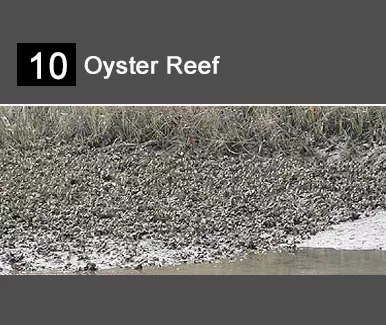
Photo
Grades: 6 7 8 9 10 11 12

One of the few hard places in the salt marsh is the shell of another animal. Most of the salt marsh is full of soft mud, but where oysters have gained a foothold, animals that like to live on a firm place are able to grow. Oysters like each other, and once an oyster reef starts to grow, it can continue to get larger as more oysters join it. But how can an oyster get to an oyster reef? The adults cannot move, but the larvae can. The oyster larva drifts in the plankton, but when it smells the other oysters in an oyster reef, it settles out of the plankton and becomes an adult. Many other animals live hidden among the shells of an oyster reef. Different kinds of sponges can grow there, annelids live among the shells, and even some fish lay their eggs inside dead oyster shells. A bird, the oystercatcher, specializes on eating oysters and these other animals.

Photo
Grades: 6 7 8 9 10 11 12

Photo
Grades: 6 7 8 9 10 11 12

Photo
Grades: 6 7 8 9 10 11 12

Photo
Grades: 6 7 8 9 10 11 12